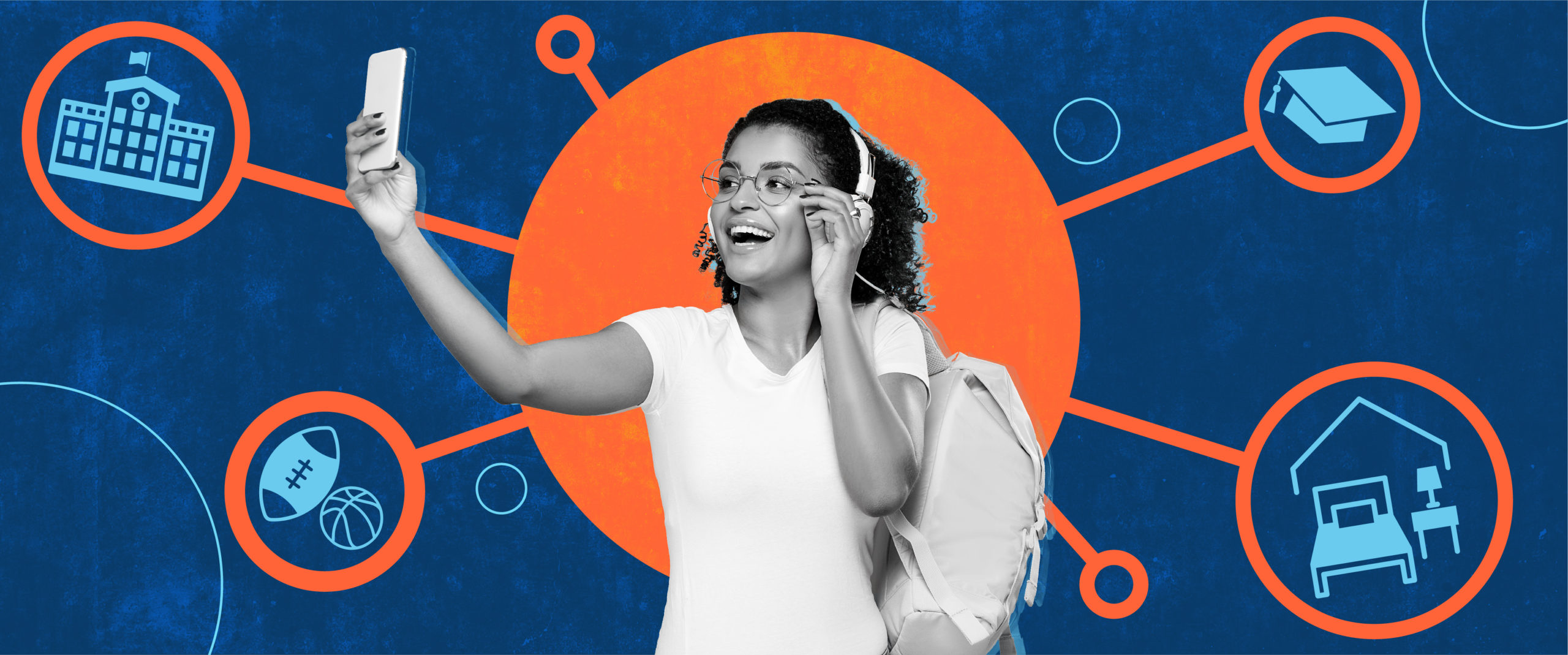For universities big and small, student ambassadors have long been key components in marketing and helping schools reach their admissions goals. Ambassadors are selected to represent their schools in a variety of ways such as campus tours, open houses, and other events where prospective students go to learn about everything a school has to offer.
In higher ed marketing, ambassadors equal authenticity. Prospective students want to see their potential experience through the eyes of another student. They are their peers. They make them more comfortable, they relate to them more than they do an older staff member, and they can speak to student life in a way that is reliable and trustworthy.
In recent years, these ambassadors have assumed new roles in the digital space, where they have the opportunity to be equally – if not more – influential on the decision making of new students. Here are a few ways they’re doing it.
Showcasing Campus Life
As long as colleges have existed, student ambassadors have been giving tours. On these visits to campus, prospective students can get a look at the physical spaces of a college as well as a quick glimpse of campus life. With YouTube and social media came the opportunity to get that glimpse without making the actual trip. Over the past year, when in-person visits weren’t even an option, tapping into ambassadors to showcase campus life virtually became all the more important.
Here, a student ambassador for my own alma mater, West Chester University, serves up a fun and raw little DIY-style campus tour for Instagram Stories, despite the campus being closed during COVID. The show must (safely) go on!
Or, as Temple University shows here, a more polished vlog-style video tour from an ambassador is a great way to go a little deeper into what campus life is really like – which you may not always have the time or opportunity to showcase on a standard walking tour.
Participating in Virtual Events
Similar to virtual campus tours, the ability to host live virtual events has become all the more important over the past year in the absence of in-person gatherings. And though the world is getting back to normal, don’t expect these events to go anywhere anytime soon. They’re easily accessible and are able to cast a wide net.
Colleges host these types of events for a variety of reasons: welcoming new students, hosting Q&As with prospective students, engaging current students, and more. In any of these scenarios, student ambassadors can play the integral role of “host/MC” or simply a support role that is featured throughout the course of the broadcast.
This virtual event from Villanova University was broadcast live to YouTube this past April. It’s a great example of not just how live events can feature polished, pre-recorded material, but (at around 23 minutes in) how ambassadors can be featured to connect with a new crop of students.
Connecting with the Next Class on TikTok
Lastly, we’re talking Gen-Z here, so we need to talk TikTok for a moment as well. With the vast majority of prospective college students now born after the millennium, colleges need to meet them where they are. Where they are is TikTok. And why spend all day trying to figure out the latest TikTok dance trend when you can simply enlist a Gen-Z student ambassador to do it for you? If you don’t speak the language, find someone who does!
@templeuniv We know times are tough right now, but Owl Ambassador @LexisTrechak is here to help. 🦉 #fyp #templeuniversity #temple #templeowls #foryou
While I’m sure we’d all love to see Temple’s admissions director hop in on this little TikTok trend, it just comes off as so much more authentic as a dorm-room dance video with a student in sweats. Unleash the kids on TikTok! It’s what they do best.
Looking for more creative ideas for getting student ambassadors involved in your higher ed marketing campaign? Drop us a line here.



